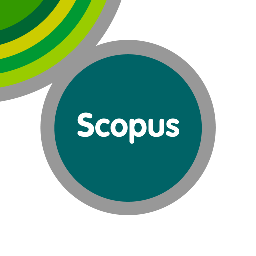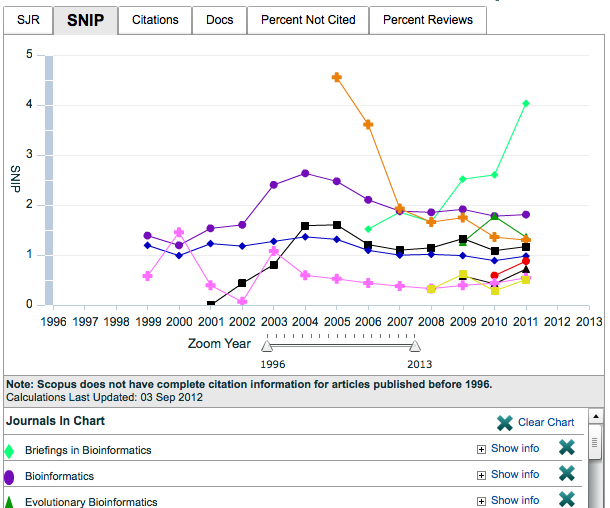 By: Ramune Kubilius, Collection Development/Special Projects Librarian and Pamela Shaw, Biosciences & Bioinformatics Librarian
By: Ramune Kubilius, Collection Development/Special Projects Librarian and Pamela Shaw, Biosciences & Bioinformatics Librarian
Northwestern University users now have another database to aid their literature research. Northwestern University library, Evanston campus, recently licensed a new resource, Scopus. Scopus is accessible to the NU community on both campuses, as well as affiliated hospitals. Scopus is possibly the largest database of abstracts and citations, and it covers fields of science, technology, medicine, social science, arts and humanities. It also calculates citation metrics such as journal rankings (similar to impact factors) for journals and h-indexes for authors.
Scopus is an abstract and citation database with smart tools to track, analyze and visualize research. Access to full-text is available through the “Find it at NU “ link icon, familiar to searchers in other databases such as PubMed or Web of Science. Included in Scopus are references from international peer reviewed journals (“in press” articles as well), trade publications, book series, and conference proceedings (full-text versions of research papers).
The primary subject coverage of Scopus is science, technology, and medicine, with some social sciences and humanities. In early 2013, Scopus began a 3-year initiative to increase books coverage beyond the current 340 book series to 75,000 titles. This increased breadth and depth of coverage is aimed at meeting the needs of book-oriented disciplines in the social sciences and humanities. In November 2012, Scopus reported that 78% of its 28 million records back to 1996 include citing and cited references. There are 21 million records going back as far as 1823; prior to 1996, abstracts are included where available, but these do not include cited references. To see details of the types and numbers of publications included in Scopus, see the Scopus "Facts" page.
In addition to general search functionality, Scopus tools include Citation Tracker, which allows you to view and receive updates of citations for a specific manuscript title, and Journal Analyzer, which compiles measures of impact for journal titles. Metrics such as impact factors, citations, and author h-indexes are compiled by other resources such as Web of Science and its journal impact database Journal Citation Reports. Scopus provides similar bibliometrics, so it is a good companion to Web of Science if you are looking for authors who have cited specific articles or you are searching for a ranking of journals by impact in your field of interest. These databases provide information beyond what is available in PubMed by calculating these metrics. Using multiple databases when you are conducting literature searches is good practice in information seeking, and Scopus provides a new tool in your information toolkit.
You can access Scopus from the Galter website under the Top Databases list from the home page or by performing a search for the word "Scopus", then following the links for online access from your search results. From the Scopus home page, you can perform a document search by keyword, author search, affiliation search, or use the advanced search tab.
You can also use the Analytics tab on the Scopus home page to search for journal rankings by field or by title. Scopus provides two measures of journal impact: the SCImago Journal Rank (SJR) and the Source Normalized Impact per Paper (SNIP). The SJR is weighted by the prestige of the journal, subject field, quality, and reputation. It is described by Scopus as similar to Google's Page Rank algorithm. The SNIP measures a source’s citation impact by weighting citations based on the total number of citations in a subject field. SNIP is the ratio of a source's average citation count per paper and the citation potential of its subject field. The SNIP is most similar to the Journal Citation Reports' impact factor from Web of Science. A graph of journals in bioinformatics ranked by SNIP is shown below.

If you'd like to see some comparisons of the strengths and weaknesses of Scopus and Web of Science, there is a great comparison of the two databases at the University of British Columbia's HealthLib-Wiki.
Updated: September 25, 2023